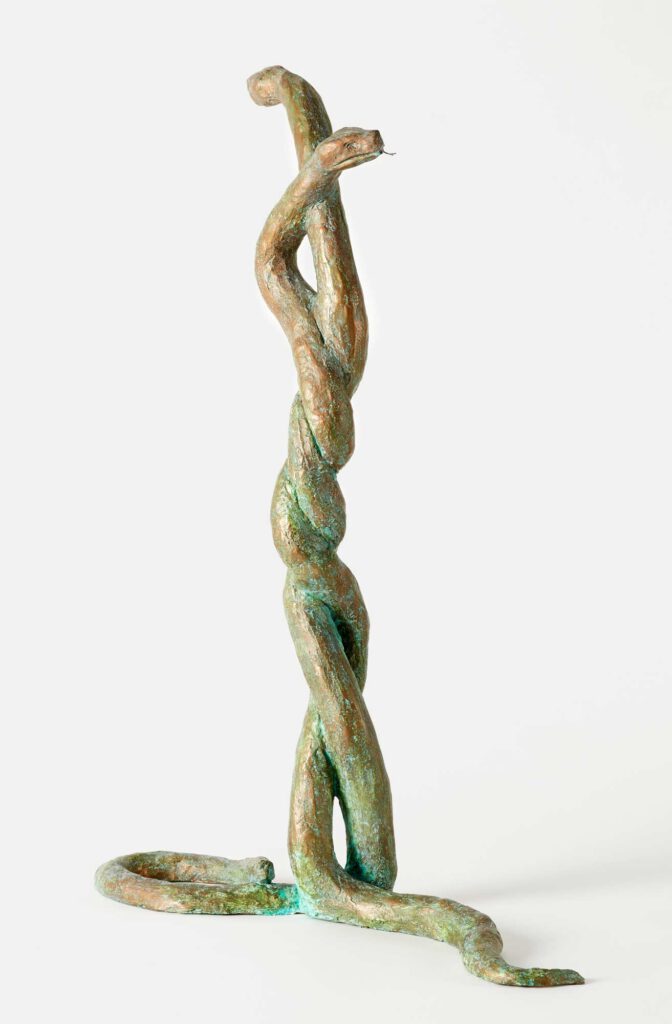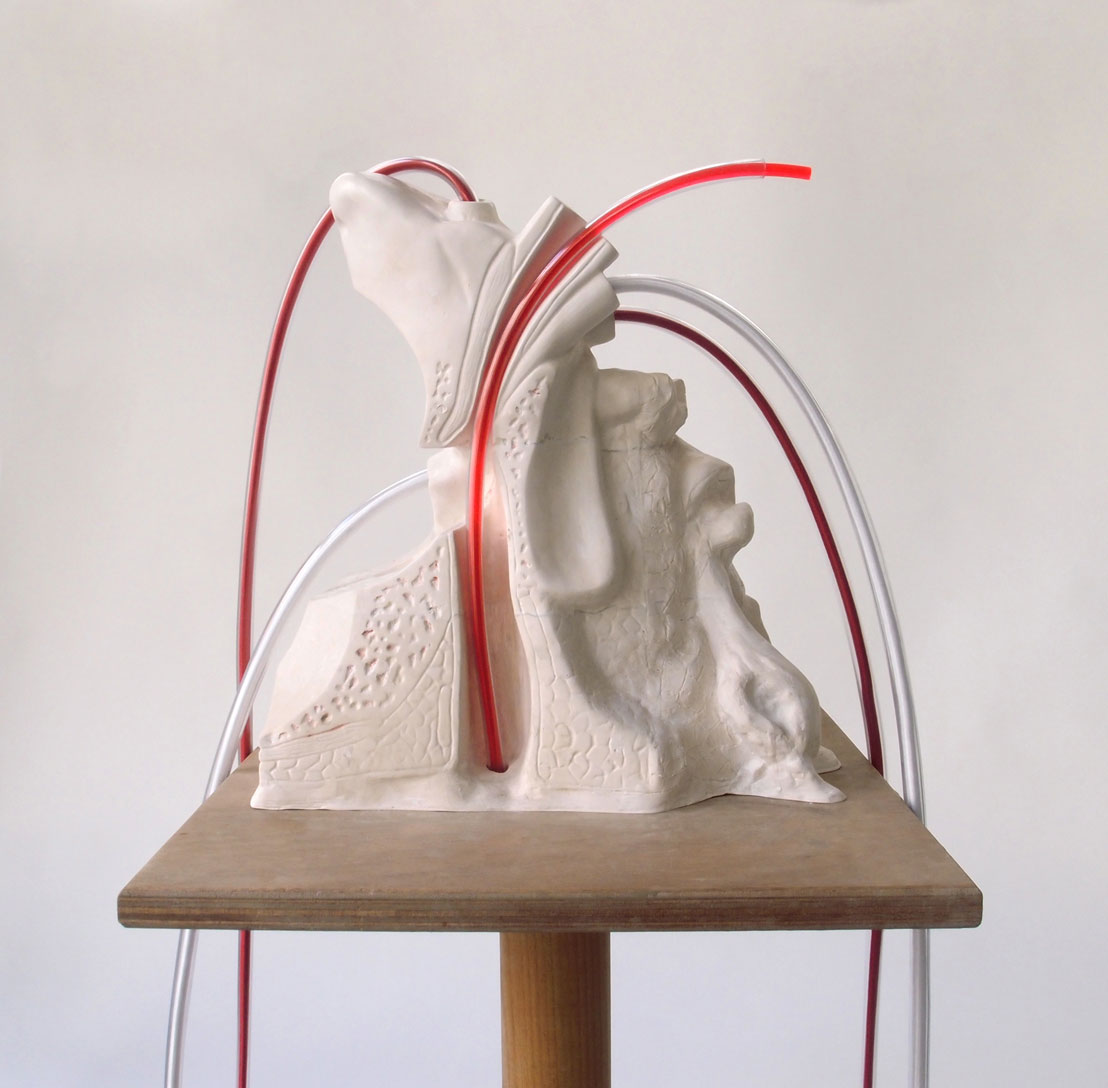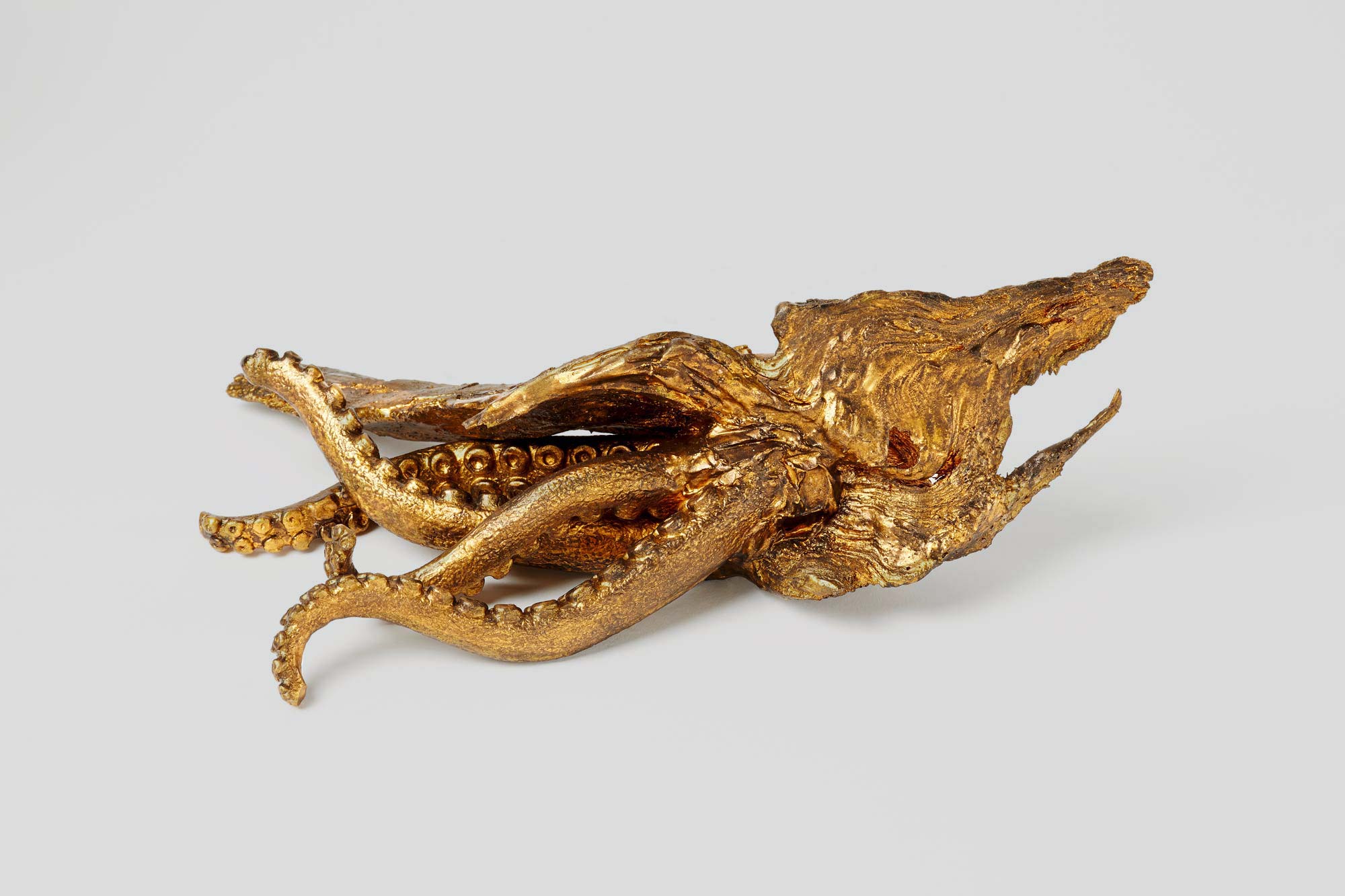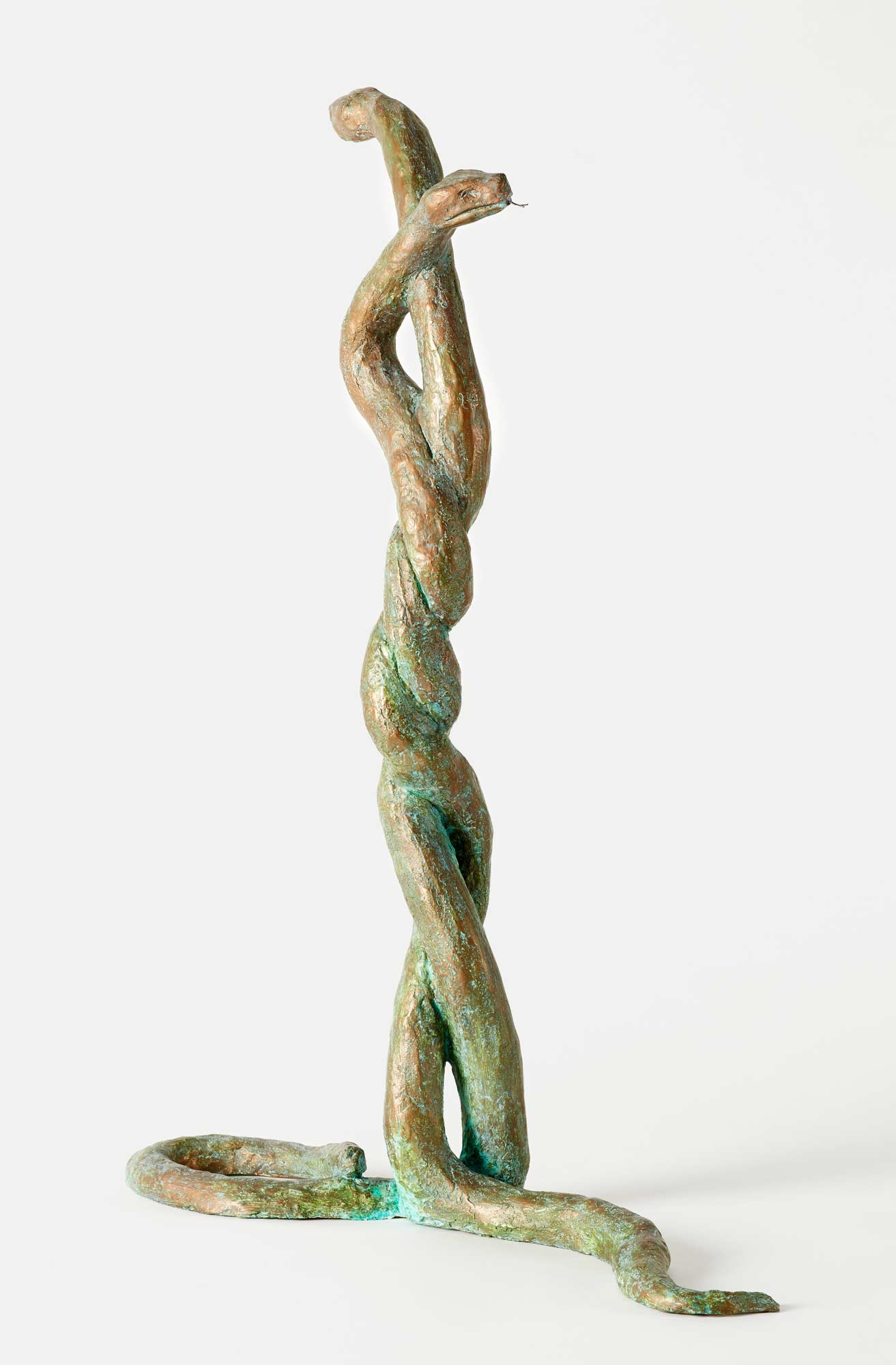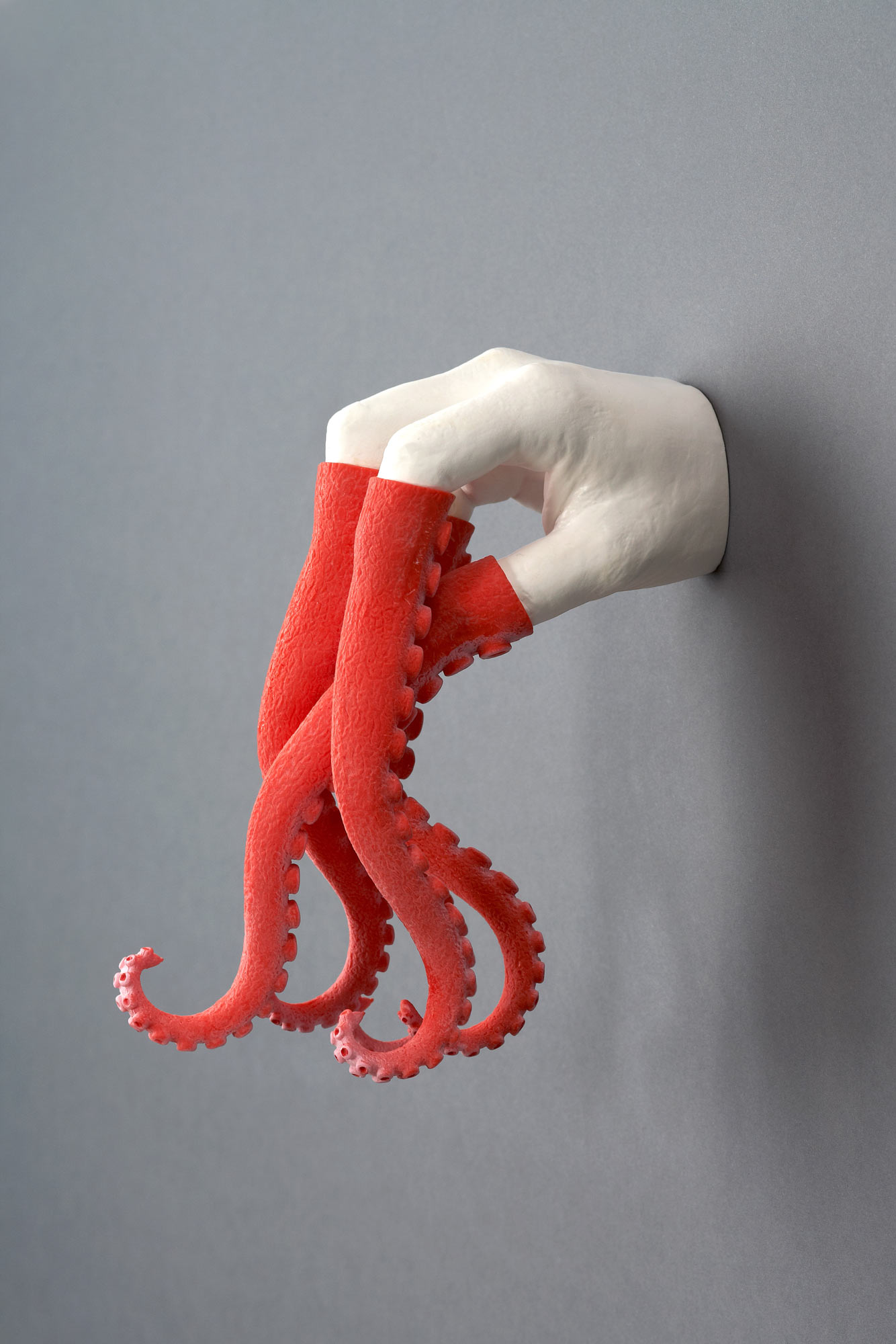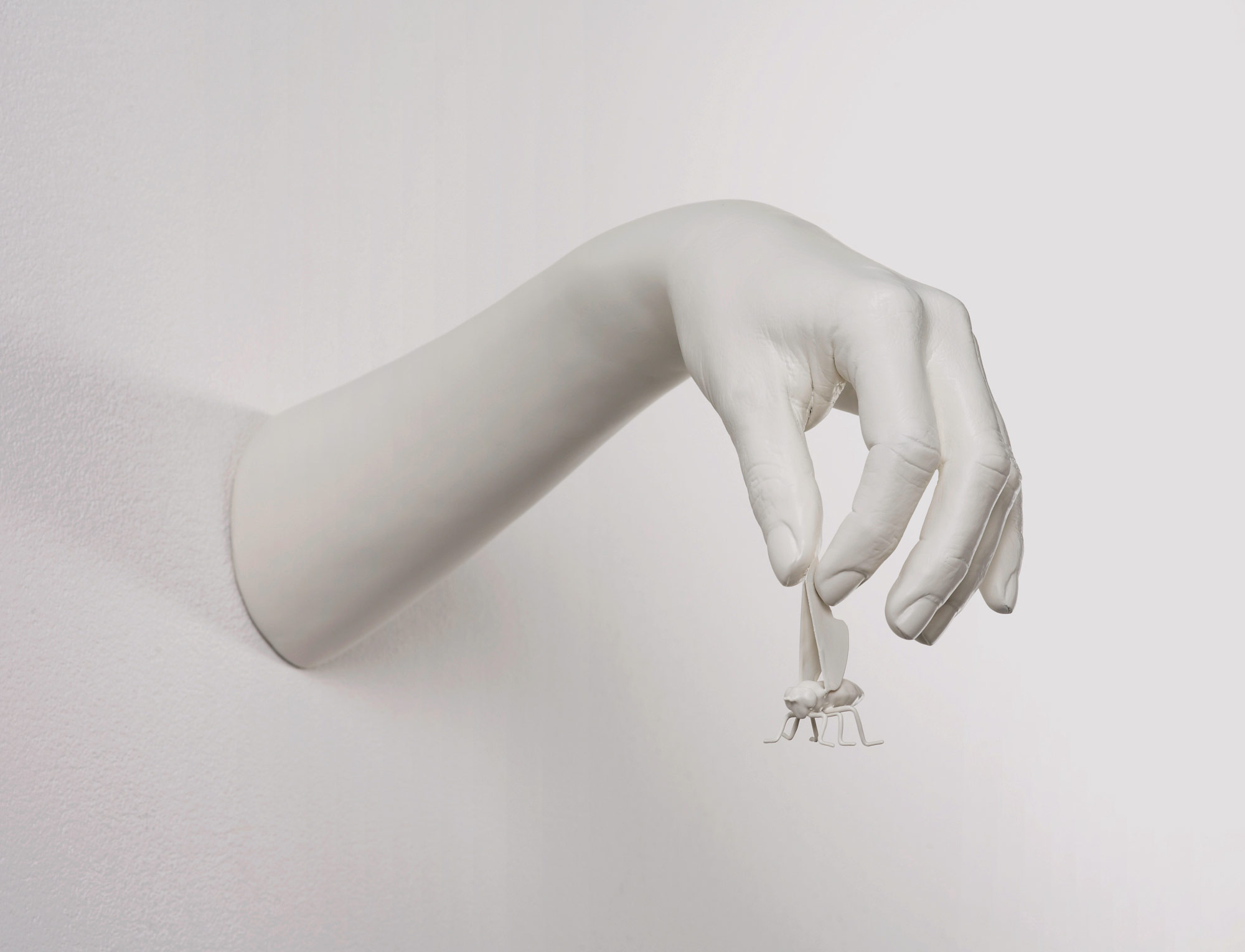In The Making Magazine, Vol. 1, 2014
Interview with Yvonne Roeb
Yvonne is a German sculptor and visual artist. Her works reference the symbolism of mythology and the rites celebrated by ancient cultures, often by combining different creatures, animals and body structures that will make the viewers question their existence and place in the world. In her unique vision, such images represent an allegory of life, people and souls transcending the common depictions and point of views, looking for the essence of humanity, but not just through humanity itself.
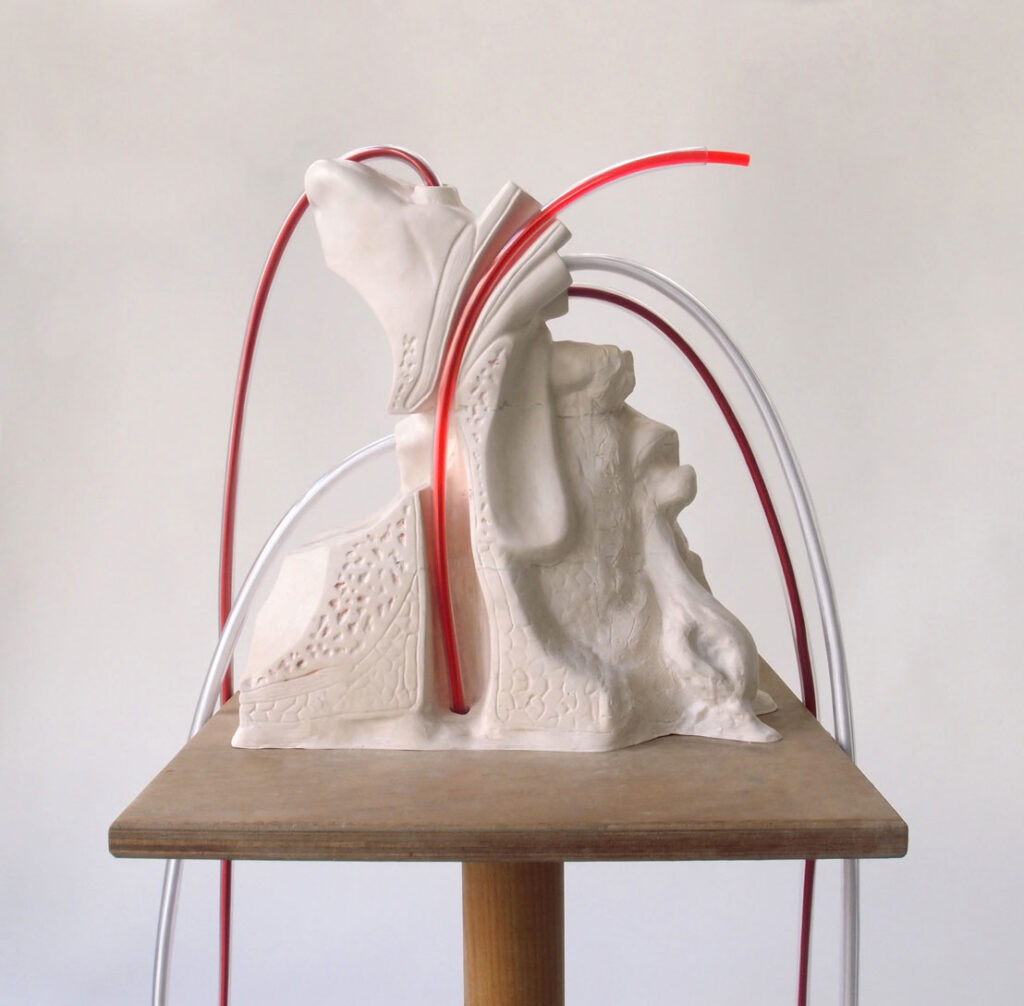
Could you tell us something about you and your background? When was your first approach to sculpture creation? When did you start expressing yourself as an artist?
I grew up in a family with very art-oriented parents. On the weekends we would go to exhibitions and travel across Europe to visit well-known institutions. As child I was fascinated by the atmosphere I encountered when I stepped into a museum. There was a special energy, something between silence and the exciting feeling of finding obvious treasures. I knew from the time I was very little that I wanted to become an artist.
I started to paint and sketch at an early age. During my time at the art academy, I realized that a two-dimensional canvas was not fulfilling for me. That is why I started to work on three-dimensional sculptures. This is what I do to this day.
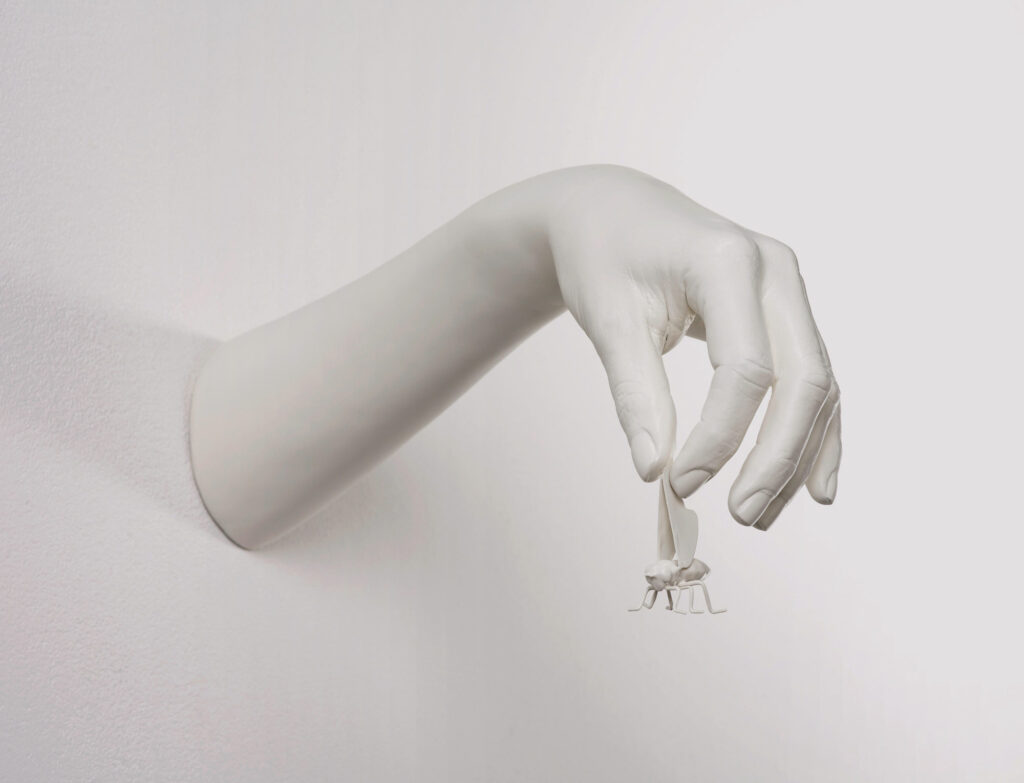
Your work seems like an allegory of the natural world, mostly represented by sculptures of animals and human bodyparts. Sometimes the two worlds meet, as in MAYBE FOREVER (2009), where a hand is holding a flying insect quite carefully. Why do you feel attracted to these themes? What do they represent to you?
My work can be seen as an allegory of the real world, but this might only be the first impression. It is correct that I use, for example, animals to express a feeling, but only because for me all creatures are equal.
I combine parts which do not obviously belong together. They find their own existence or way of interacting. It is more about breaking the habit of seeing the world in one particular way, and to question why these objects are not also the way I depict them. I use archetypes in an attempt to get closer to the inner soul of humans.
And what materials do you normally use in your work?
I use all kinds of materials. It always depends on the image I want to create and the aura the work requires. There are no restrictions. I use resin, plaster, ceramics, marble, wood, and lots of other materials. In the end, the materials often get transformed in an unusual way. For example, by using paint on ceramic or by drawing on top of plaster in order to create the appearance of marble.
Are you interested in establishing a communication or a dialogue between your art and the public?
Of course I would like to create a dialogue. People often say about my work that it is so private and sensitive, even fragile, because it talks about something that can not be grasped at once. The initial attraction to my work often gives way on second glance, when a new thought or understanding emerges. At that point people get irritated about what they see. I like that.
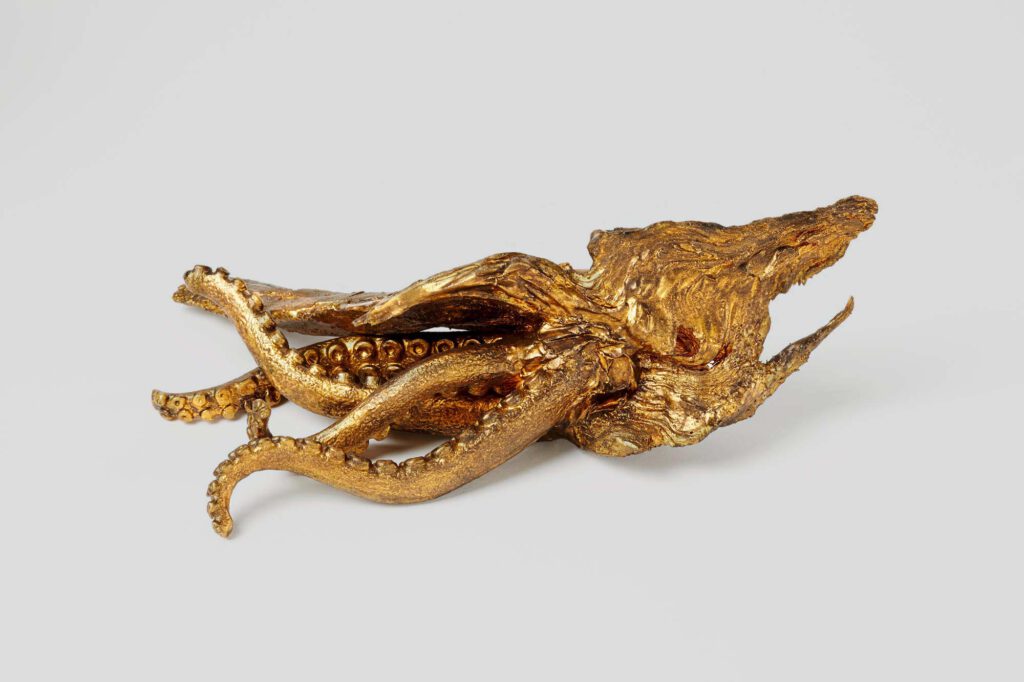
I could explain my work through historical symbols or the codes certain cultures have used, but I think it should come along without explanation. I want to share inner thoughts and feelings, and this is always individual. I do, however, admit that knowing, for example, that a five-leaf rose was used in the Medieval times as a symbol for a pledge of secrecy would open another door.
Most of your sculptures are monochromatic, normally white-coloured. But sometimes some colour appears, like in NEXT I NOTICED IT WAS SPRING (2011) with red octopus arms as thimbles, or like in INNER PART I (2013) where some red tubes go through an organic-like sculpture. How important is colour for you and how would you define your aesthetics?
Most of the time I use monochromatic colors because I am first of all interested in the form of the object. I also consider the space around the work and what needs to be shown.
I have only used color to highlight elements and to give the viewer a direction or suggestion of how to move their eyes across the object. It is better to reduce everything to its essence. This is hard work when you are overloaded with ideas while making the object.
What has been your biggest artistic challenge so far?
I am planning a show at the Lehmbruck Sculpture Museum in Duisburg, Germany. It is a very special place with a great art collection. The works range from Picasso to Kiki Smith. It is a wonderful challenge!
What are you doing now and what projects do you plan for the future?
I am working on a series of snake sculptures. They all have different subjects and sizes, and they are made of different materials. I like the idea of seduction and what connotation it has for different cultures back then and nowadays.
